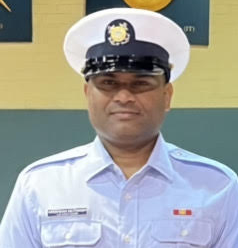In "Real Talk on Hearing" Darryl McDaniels from Run-DMC talks not only hip-hop history and life back in the day, but also the importance of resting your ears and being of sound mind and body.
In March, Hearing Health Foundation enlisted the support of world-class artists in support of World Hearing Day and our message to hearing health and hearing protection. Our 60-second graphics-motion video titled “Listen Up People” anchored the outreach, helping us gain notable celebrity and musician attention. We were thrilled to see social media shoutouts from Yoko Ono, Tom Morello (Rage Against the Machine), Jeff Ament (Pearl Jam), Kathy Valentine and Gina Schock (The Go-Go’s), Darryl McDaniels (Run-DMC), KT Tunstall, Lyle Preslar (Minor Threat), Melissa Etheridge, John McLaughlin, and Nandi Bushell. Collectively and even individually these artists have millions of followers on social media.
This month we continue the conversation by rolling out a series of 60-second videos. The first “Real Talk” features hip-hop legend Darryl McDaniels, the “D” in Run-DMC. These artist/industry-driven interviews provide perspectives on the importance of hearing health and hearing loss prevention—for life.
Jeff Ament of Pearl Jam posted a video and tagged Hearing Health Foundation on World Hearing Day.
Run-DMC came up on the streets of 1980s New York City to become one of the most influential rap/hip-hop acts of all time. For their now-iconic music—with singles such as "It's Tricky" and "Walk This Way" (featuring Aerosmith)—the band was inducted into the Rock and Roll Hall of Fame in 2009 and earned a Grammy Lifetime Achievement Award in 2016. In "Real Talk on Hearing" Darryl talks not only hip-hop history and life back in the day, but also the importance of resting your ears and being of sound mind and body.
HHF’s Keep Listening campaign is sounding the alarm about the risk of hearing loss and tinnitus from excess noise exposure. In the same way we now know of the cancer risks from secondhand smoke or too much sun, HHF wants people of all ages to be aware of the dangers of listening too loud and too long, and to take steps to protect the hearing you have, for life. Keep Listening’s message is that simple habit changes can lead to lasting, positive health effects: Be aware of your daily noise exposure; carry and wear earplugs for loud environments; take listening breaks to rest your ears; and advocate for quieter shared spaces.








While working in the clinic I realized how much I loved creating resources for patients—brochures, handouts, visual guides—mostly because I couldn’t find what I wanted online.